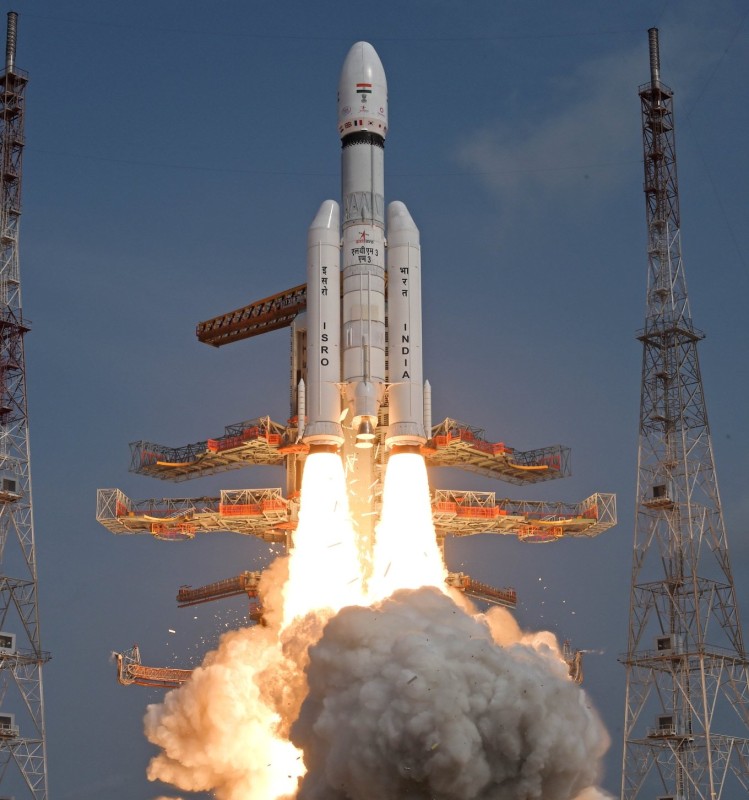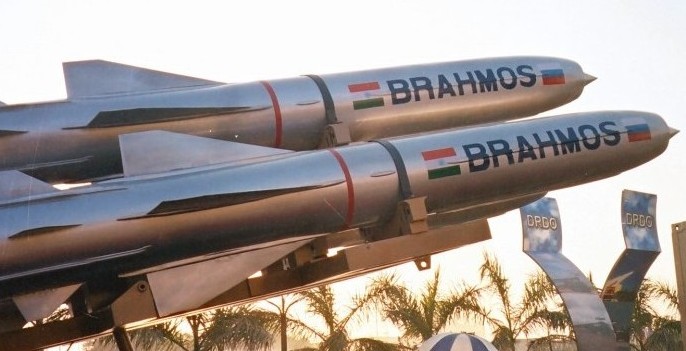
The LVM3 rocket carrying 36 satellites of UK-based OneWeb group lifts off from Sriharikota on Sunday. (Photo: ISRO/ Twitter)
CHENNAI (PTI): Scientists at ISRO on Sunday reaped another success with the LVM3-M3/OneWeb India-2 mission as the rocket used had a configuration similar to the one that would be used for human spaceflight in the ambitious Gaganyaan project.
The LVM3 rocket (formerly the Geosynchronous Launch Vehicle Mk III), Indian Space Research Organisation’s heaviest launch vehicle so far, successfully placed 36 satellites of OneWeb into orbit, earlier in the day.
It had the S200 motors on board, similar to the launchers that are required for the Gaganyaan mission, ISRO Chairman S Somanath noted.
"This rocket (LVM3-M3) also has the S200 motors that are designed with increased margins and features which are suited for Gaganyaan configuration. We are happy that it performed very well in this mission." he said, addressing scientists at the Mission Control Centre.
"There were many more improvements in this rocket, which are aimed towards making it human-rated in the other stages and systems as well. I am very happy to see the progress incrementally happening towards Gaganyaan Mission as well," the ISRO Chief said.
Gaganyaan mission envisages the demonstration of human spaceflight capability by launching a crew of three members into an orbit of 400 km for a three-day mission and bringing them back safely to earth by landing in Indian waters.
The mission is targeted for launch in the fourth quarter of 2024.
Somanath, who is also the Secretary of the Department of Space, thanked the Centre for its support.
"Let me take this opportunity to thank our Prime Minister (Narendra Modi) as well as the Government for supporting us in making the launch vehicle available for commercial launches, because it was at a very short notice (72 days)," he said.
The approvals for Sunday's mission increased the confidence of the scientists, as the GSLV Mk III rocket would be flying in the Gaganyaan mission as well, he said.
Besides the success of the LVM3-M3/OneWeb India 2 mission, scientists also successfully executed the integration of the rocket under one roof at Satish Dhawan Space Centre, Sriharikota.
LVM3-M3/OneWeb India-2 Mission Director S Mohana Kumar said the assembly of the launch vehicle was done in the newly-built second vehicle assembly building, where the entire vehicle integration was carried out under "one roof" with “utmost care” and “best standards of safety”.
"The vehicle was moved to the launch pad also through a newly-built track. Every activity was smooth and safe and we could achieve the mission in a wonderful manner," he said.
Kumar also extended his gratitude to his colleagues as the LVM3 Core project team rose to the occasion to launch it within the brief period of 72 days.
"I take this opportunity to thank the Chairman (S Somanath) for the entire project and for being with us. Your timely guidance and learned opinion made our decision process very fast, which enabled us to complete the mission in a record time of 72 days," he said.
The key success for the launch could be attributed to the “robust review mechanism” that exists in ISRO, Kumar pointed out.
Speaking about future missions, Somanath said the scientists were gearing up for a commercial launch of a polar satellite launch vehicle in April.
"We are getting ready for the next launch campaign soon. So, Satish Dhawan Space Centre Sriharikota is going to be buzzing with a lot of work for the subsequent launch mission," he added.
 Previous Article
Previous Article Next Article
Next Article












The Indian Air Force, in its flight trials evaluation report submitted before the Defence Ministry l..
view articleAn insight into the Medium Multi-Role Combat Aircraft competition...
view articleSky enthusiasts can now spot the International Space Station (ISS) commanded by Indian-American astr..
view article